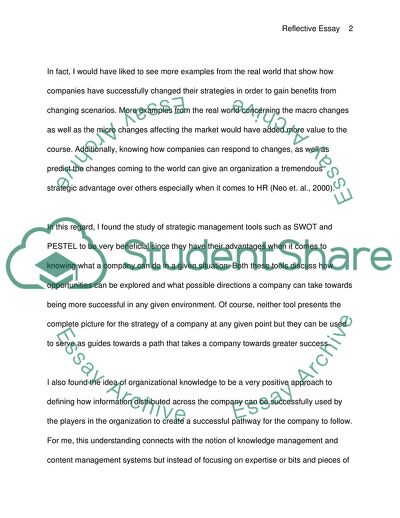
- Home
- Free Samples
- Premium Essays
- Editing Services
- Extra Tools
- Essay Writing Help
- About Us
- Studentshare
- Subjects
- Miscellaneous
- Reflective Essay
Reflective - Essay Example

- Subject: Miscellaneous
- Type: Essay
- Level: Undergraduate
- Pages: 4 (1000 words)
- Downloads: 0
- Author: rickgorczany
Extract of sample "Reflective"
For example, instead of focusing on day to day sales or even monthly results, the course taught me to take a wider view of business and understand how long term results as well as the direction of the business depends on the strategy adopted in the business. Such recommendations were also made by (Gardiner, 2005) and within the course itself. The examples given on how other companies in the past have changed their direction towards more profitable markets or developed new products to diversify their offering only goes to show that strategy plays an essential part when it comes to making successful companies.
In fact, I would have liked to see more examples from the real world that show how companies have successfully changed their strategies in order to gain benefits from changing scenarios. More examples from the real world concerning the macro changes as well as the micro changes affecting the market would have added more value to the course. Additionally, knowing how companies can respond to changes, as well as predict the changes coming to the world can give an organization a tremendous strategic advantage over others especially when it comes to HR (Neo et. al., 2000).
In this regard, I found the study of strategic management tools such as SWOT and PESTEL to be very beneficial since they have their advantages when it comes to knowing what a company can do in a given situation. Both these tools discuss how opportunities can be explored and what possible directions a company can take towards being more successful in any given environment. Of course, neither tool presents the complete picture for the strategy of a company at any given point but they can be used to serve as guides towards a path that takes a company towards greater success.
I also found the idea of organizational knowledge to be a very positive approach to defining how information distributed across the company can be successfully
...Download file to see next pages Read More
- TERMS & CONDITIONS
- PRIVACY POLICY
- COOKIES POLICY